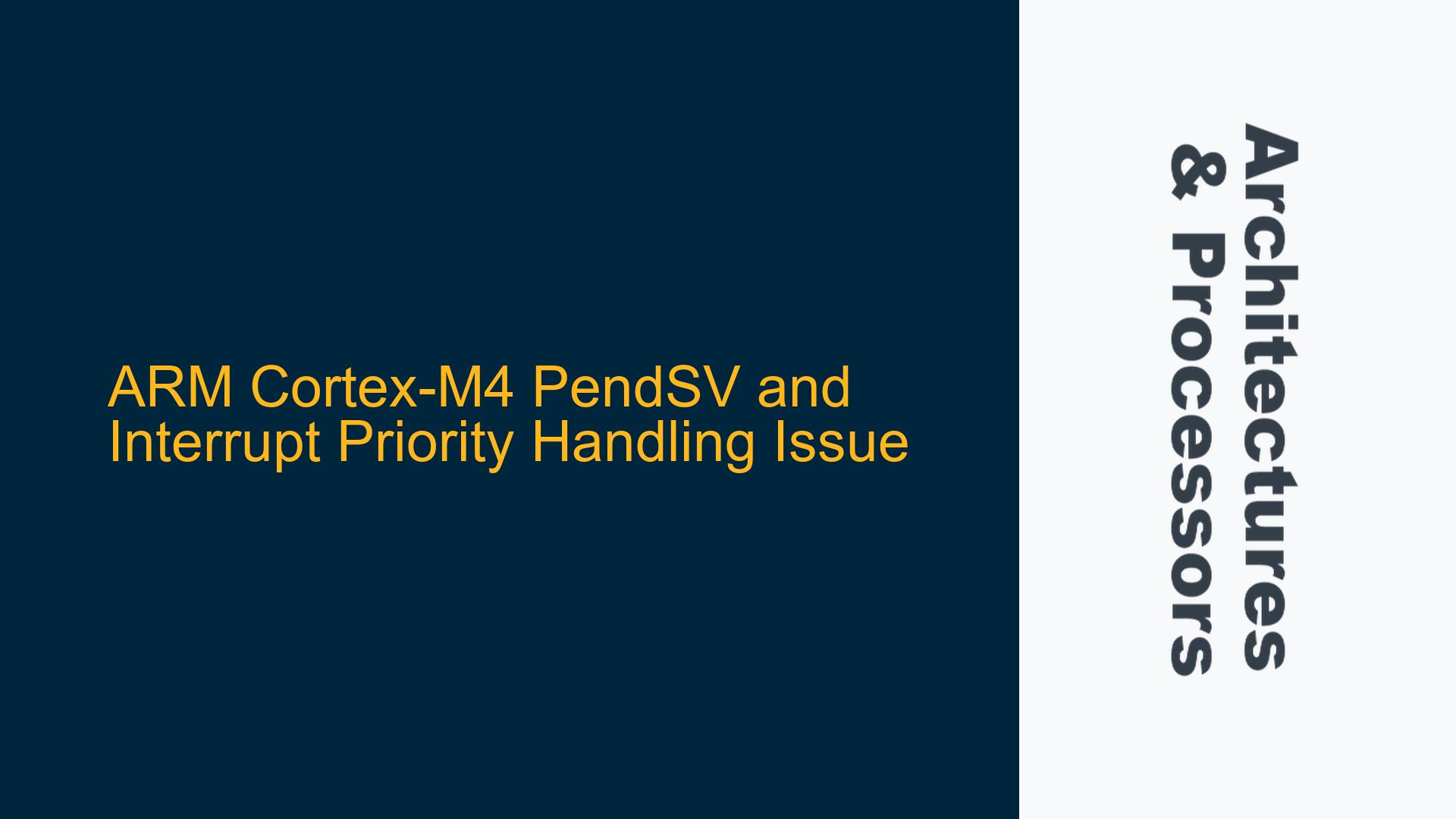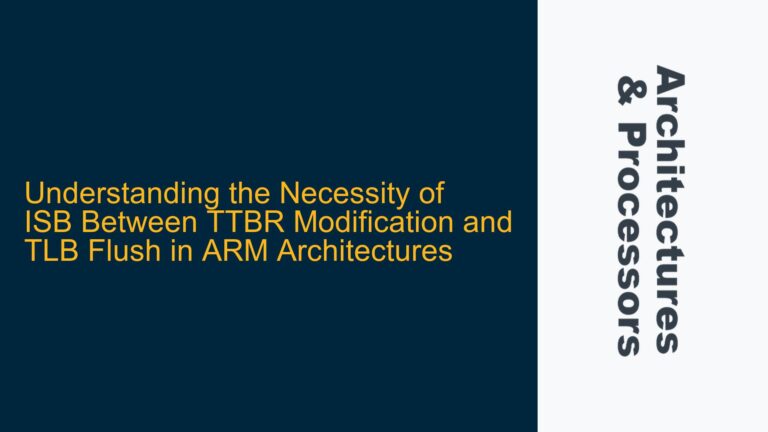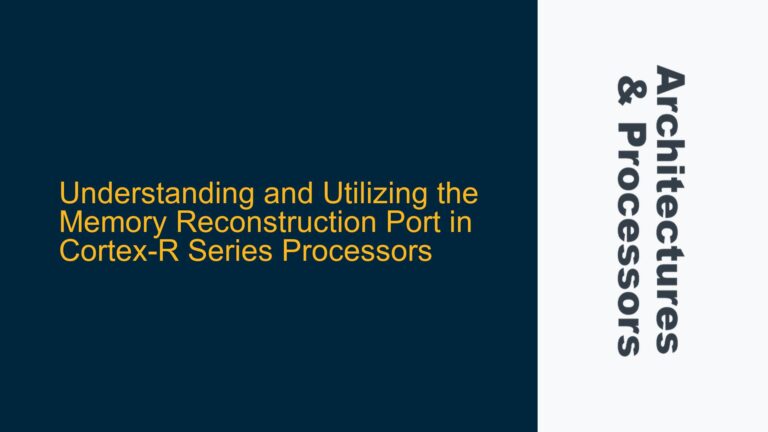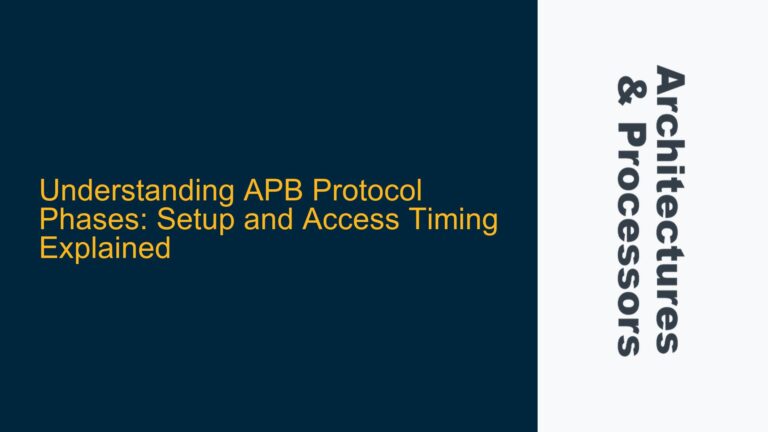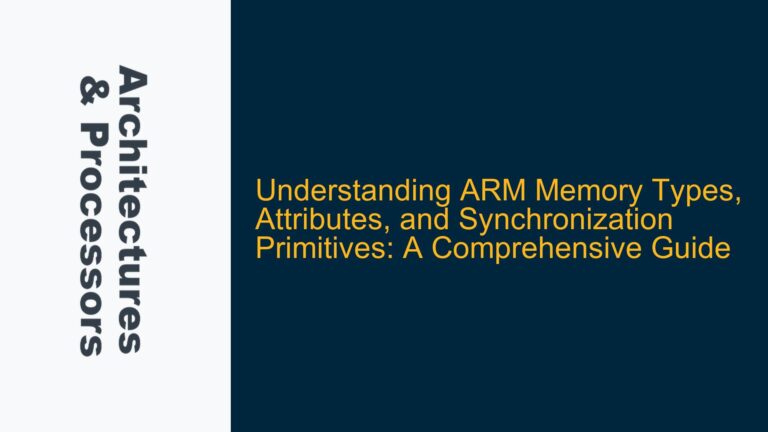PendSV Exception and Interrupt Priority Mismanagement During Nested Interrupts
The core issue revolves around the handling of the PendSV exception and nested interrupts in an ARM Cortex-M4-based system, specifically the S32K148 microcontroller. The problem manifests when a PendSV exception is intentionally generated during the execution of a lower-priority interrupt (Interrupt A) while interrupts are globally disabled using the FAULTMASK register. The expected behavior is that once interrupts are re-enabled, the PendSV exception, which has a higher priority than both Interrupt A and a subsequently occurring Interrupt B, should be serviced first. However, the observed behavior is that Interrupt B is serviced before PendSV, despite PendSV having a higher priority. This discrepancy raises questions about the interaction between interrupt priorities, the FAULTMASK register, and the PendSV mechanism.
The PendSV exception is typically used in real-time operating systems (RTOS) for context switching, and its correct handling is critical for system stability. The issue is further complicated by the fact that both Interrupt A and Interrupt B are periodic interrupts generated by the FlexTimer Module (FTM) on different channels. The unexpected behavior occurs when Interrupt B is triggered during the execution of Interrupt A, while interrupts are disabled. This scenario suggests a potential flaw in the understanding or implementation of the ARM Cortex-M4 interrupt handling mechanism, particularly concerning the PendSV exception and the FAULTMASK register.
FAULTMASK Register Impact and PendSV Acceptance Timing
The root cause of the issue lies in the interaction between the FAULTMASK register, the PendSV exception, and the timing of interrupt acceptance. The FAULTMASK register, when set, disables all interrupts except for Non-Maskable Interrupts (NMI) and HardFault exceptions. When the FAULTMASK is set, the PendSV exception, although pending, cannot be serviced immediately. Instead, it remains pending until the FAULTMASK is cleared. However, the timing of when the PendSV exception is accepted relative to other pending interrupts is not straightforward and can lead to unexpected behavior.
In the described scenario, the PendSV exception is generated during the execution of Interrupt A, while interrupts are disabled via FAULTMASK. At this point, both PendSV and Interrupt B are pending. When the FAULTMASK is cleared, the processor must decide which interrupt to service first. According to the ARM Cortex-M4 documentation, the processor should service the highest priority pending interrupt first. However, the observed behavior suggests that Interrupt B is being serviced before PendSV, despite PendSV having a higher priority.
This behavior can be attributed to the timing of interrupt acceptance and the internal state of the interrupt controller. When the FAULTMASK is cleared, the processor re-evaluates the pending interrupts and may accept Interrupt B before PendSV due to the specific timing of the interrupt signals. This timing issue is further exacerbated by the fact that both Interrupt A and Interrupt B are periodic interrupts generated by the FTM, which may introduce additional timing complexities.
Implementing Data Memory Barriers and Ensuring Correct PendSV Acceptance
To address the issue and ensure that the PendSV exception is accepted before Interrupt B, several steps can be taken. The first step is to ensure that the PendSV exception is correctly prioritized and that the interrupt controller is in the correct state when the FAULTMASK is cleared. This can be achieved by using the Data Memory Barrier (DMB) instruction after setting the PENDSVSET bit in the Interrupt Control and State Register (ICSR). The DMB instruction ensures that all memory accesses are completed before the PendSV exception is generated, which can help in ensuring that the PendSV exception is accepted before any other pending interrupts.
Additionally, it is important to verify the configuration of the interrupt priorities and ensure that the PendSV exception is indeed configured with a higher priority than both Interrupt A and Interrupt B. This can be done by checking the values in the Nested Vectored Interrupt Controller (NVIC) priority registers. If the priorities are not correctly configured, the PendSV exception may not be serviced first, leading to the observed behavior.
Another potential solution is to use the BASEPRI register instead of the FAULTMASK register to disable interrupts. The BASEPRI register allows for the selective disabling of interrupts based on their priority, which can help in ensuring that only lower-priority interrupts are disabled while allowing higher-priority interrupts, such as PendSV, to be serviced. This approach can help in avoiding the timing issues associated with the FAULTMASK register and ensure that the PendSV exception is serviced first.
Finally, it is important to carefully review the timing of the interrupt generation and ensure that the FTM interrupts are not causing any unexpected behavior. This can be done by analyzing the timing of the FTM interrupts and ensuring that they are not overlapping or causing any conflicts with the PendSV exception. If necessary, the timing of the FTM interrupts can be adjusted to ensure that they do not interfere with the PendSV exception.
In conclusion, the issue of PendSV exception and interrupt priority mismanagement in the ARM Cortex-M4 can be addressed by carefully configuring the interrupt priorities, using the DMB instruction to ensure correct PendSV acceptance, and considering the use of the BASEPRI register instead of the FAULTMASK register. Additionally, the timing of the FTM interrupts should be carefully reviewed to ensure that they do not interfere with the PendSV exception. By following these steps, the correct behavior of the PendSV exception can be ensured, leading to a more stable and reliable system.
